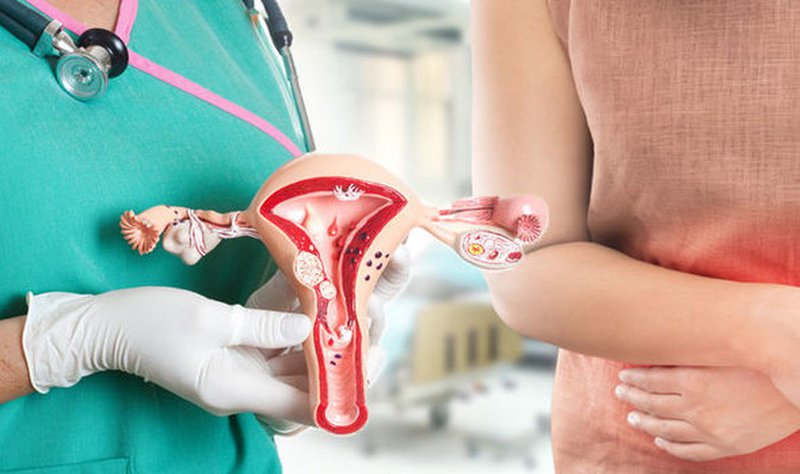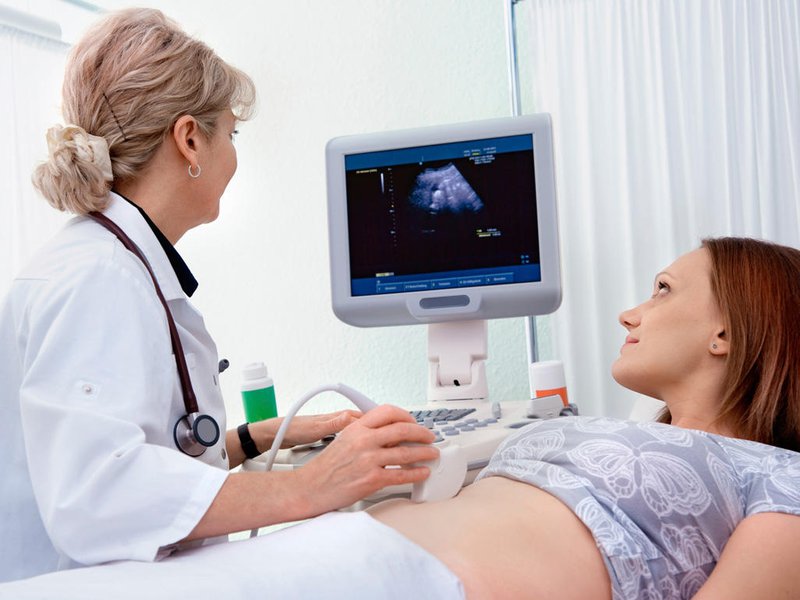An important and rich reproductive health activity.
- If done properly and fully, the contents will be highly effective for the health of the mother and fetus.
- Health care for mother and fetus before birth.
- Detect risks early.
- Preventing five obstetric complications.
Personal history
Gynecological
- How old are you getting married?
- Menstrual nature.
- The methods of pregnancy loss have been used.
- There is treatment of infertility, acquired gynecological pathologies and gynecological surgeries.
Obstetric
- PARA
- Previous pregnancies: pathological fetuses, fetal malformations, postpartum weight, delivery methods, postpartum haemorrhage, postpartum infection
Internal - surgical
- Allergies, diabetes, cardiovascular, liver, kidney, hematological, psychiatric diseases
- Pathological surgery
Family history
Record medical, infectious or genetic diseases in the family.
Current pregnancy agenda
- Ask about the first date of your last period and plan your date of birth.
- If you do not remember the first day of your last menstrual period, it can be based on the results of ultrasound (best in the first 3 months of pregnancy) to determine gestational age.
- Morning sickness, the time of the miscarriage.
- If any: unusual signs: abdominal pain, discharge, vaginal bleeding, headache, dizziness, epigastric pain, vomiting (signs of pre-eclampsia), fatigue, difficulty breathing.
- Measure body height.
- Weight (per prenatal visit).
- Mucosal examination, edema (every antenatal visit).
- Blood pressure measurement (every prenatal visit).
- Cardiopulmonary examination (first antenatal check-up and follow-up if abnormal).
|
Time
|
Number of visits
|
Supersonic
|
Test
|
Measure NST
|
|
the first 3 months
|
After your period is late
|
>= 1 times
|
2D
|
Routine testing
|
–
|
|
|
11-13,6 week
|
1 times
|
Đo NT
|
Double test
|
–
|
|
3 middle months
|
14-20 week
|
1 time / month
|
2D*
|
+- Triple test*
+- Amniocentesis if> 40 years old
|
–
|
|
|
20-24 week
|
1 time / month
|
4D
|
|
–
|
|
The last 3 months
|
29-32 week
|
1 times
|
Doppler
|
|
Pregnancy pathology
|
|
33-35 week
|
1 time / 2 weeks
|
|
|
Pregnancy pathology
|
|
36-40 week
|
1 time / week
|
|
Prenatal test
|
Every week
|
Attention
- Antenatal care schedule will change when there are abnormal signs (abdominal pain, water, bleeding ...).
The purpose of periodic antenatal care
- Determination of pregnancy - pregnancy status.
- Determine gestational age - calculate due date.
- Evaluation of mother's health: medical, surgical and pregnancy.
- Number of antenatal care visits: at least 2 times.
- Abdominal examination: see if there are surgical scars, uterine height can be measured.
- Speculum and vaginal examination: at the first examination.
- Routine blood test: (when determining pregnancy through ultrasound).
- Blood chart
- Blood type: ABO, Rhesus.
- Blood sugar
- HIV, Syphilis, Hepatitis B
- Rubella test (IgG, IgM), history of recurrent miscarriage try to add Cytomegalovirus. Toxoplasmosis.
- Urine test: 10 parameters
- Other tests depending on the underlying medical condition of the mother
- Ultrasound (1st time): required to determine
- Pregnant,
- Fetal position: inside or outside the uterus.
- Number of pregnancies
- Survival: fetal heart
- Gestational age.
- Pregnancy status: Pregnancy, multiple pregnancy, threatened miscarriage, stillbirth ...
- Ultrasound of the nape of the nape of the fetus (11-13 weeks of 6 days gestation).
- Double test to screen for chromosomal abnormalities (after measuring the nape of the nape)
Things to do
1. Monitoring the development of the fetus:
- mother weight
- uterine height
- listening to fetal heart.
2. Detect abnormalities of pregnancy:
- Poly amniotic fluid,
- Multiple pregnancy,
- Placenta forwards,
- High blood pressure, pre-eclampsia
- Gestational diabetes,
- Threatened miscarriage or threat of preterm birth.
- Uterine cleft: based on history, clinical and ultrasound.
3. Prenatal screening for high-risk pregnant women or abnormal ultrasound detection.
4. Guidelines on nutrition, hygiene, activities, follow-up and umbilical tetanus vaccination.
5. Guiding the pregnant women to attend the class "Healthcare for mothers".
Subclinical:
- Routine testing if pregnant woman has not done yet.
- The total test analyzes the urine each antenatal visit.
- Triple Test at 14-20 weeks gestation, if not done Double test.
- Gestational age 20-24 weeks: 4D ultrasound to evaluate morphology.
- At 24-28 weeks pregnant: do a glucose tolerance test (test 75g). This test can be done earlier than at the time of detecting a pregnant woman at risk of gestational diabetes.
*Note
- If there is a diagnosis of open waist uterus, stitch the uterus at 14-18 weeks.
- Consult department or institute for cases of medical diseases (asthma, diabetes, ...) ovarian tumors, with surgical indications for more than 15 weeks).
Things to do
1. In addition to the similar examination 3 months between pregnancy, from 36 weeks onwards need further determination
- Pregnancy.
- Estimated pregnancy weight.
- Pelvic.
- The prognosis of birth is often difficult.
2. Guide pregnant women
- Counting pregnant movements.
Watch for unusual symptoms
- Vaginal bleeding.
- Amniotic fluid discharge.
- Abdominal pain in episodes.
- Edema, headache, dizziness.
- Prepare furniture for mother and baby for birth.
3. Counseling pregnant women suitable for pregnancy status.
4. Classification of high-risk pregnancies.
Subclinical
1. Total urine analysis (per exam).
2. Ultrasound
- Ultrasound at least 1 time at 32 weeks pregnant to determine the fetal position, amount of amniotic fluid, placenta position, evaluate fetal development. Can be repeated every 4 weeks.
- Color ultrasound (≥ 28 weeks pregnant) when fetal growth delay is suspected: mother slowly gains weight, BCTC does not increase, fetal biology measurements do not increase after 2 weeks, mothers with high blood pressure ... can be repeated after each 2 weeks.
- More times can be performed if needed.
3. Non stress test: performed when indicated. Measure each week when pregnancy is ≥ 36 weeks
4. Optical pelvic stimulation: examine the suspicious pelvis.
5. MRI when indicated.
Note:
6. Antenatal blood test; blood clotting, coagulation function (PT, Aptt, Fibrinogen).
7. Make more blood type ABO, Rhessus, HIV, HbsAg, syphilis if the pregnant woman has not done it before). Specialized tests are indicated according to medical orders: heart disease, kidney disease, thyroid disease ...
8. Specialist examination to assess the medical condition of the pregnant woman in the past or the condition of the fetus for specialist treatment and direction of management during labor (vaginal delivery, caesarean section, transfer to the Pediatric Hospital later birth).
- Consult the clinic for cases of ovarian tumor (gestational age 15 weeks or more, color ultrasound, with AFP, β HCG and CA 125 tests).
- Mother cardiovascular disease, basedow, hepatobiliary disease ...
- I have a congenital heart disease, diaphragmatic hernia, ...
9. Note to detect pregnancy abnormalities:
- Multiple pregnancy, poly amniotic fluid.
- Each other striker, each other football
- High blood pressure, pre-eclampsia
- Gestational diabetes.
10. After each examination, there must be a clear diagnosis.
- The tetanus vaccination schedule for pregnant women and women of childbearing age (15-35 years old) includes 5 injections as follows:
|
Injection 1
|
Early injection as soon as detecting pregnancy
Or injections to women of childbearing age in the high-risk area
|
|
Injection 2
|
Injections are given at least 1 month from nose 1 and 01 month before birth
|
|
Injection 3
|
Get the shot at least 6 months after the second nose, or when the next pregnancy
|
|
Injection 4
|
Get the shot at least 1 year from the 3rd nose, or when the next pregnancy
|
|
Injection 5
|
Get the shot at least 1 year from the 4th nose, or at the next pregnancy
|
For some cases that do not follow the above vaccination schedule or get pregnant multiple times, the tetanus vaccination is done as follows:
- If the interval between doses is delayed, exceed the vaccination scheduled time, get the next shot without needing to start again.
- In cases where 05 doses of tetanus vaccine have been injected on schedule, it will create protective immunity in 25-30 years.
- Iron and folic acid supplementation should be taken right from the first antenatal visit, maintained throughout pregnancy and up to 06 weeks.
- Iron 30-60mg / day.
- Folic acid 800-1000mcg / day.
- Calcium supplementation 1000-1500mg / day.
- Document recording: results of antenatal care, diagnosis and treatment.
- Notify pregnant women of normal or abnormal pregnancy results, points to be observed.
- Instruct and guide the use of drugs and make an appointment for a follow-up visit.











 A12 - 55 - 57 Lê Trọng Tấn, Khu phố Bình Đường 2, Phường An Bình, TP. Dĩ An, Bình Dương
A12 - 55 - 57 Lê Trọng Tấn, Khu phố Bình Đường 2, Phường An Bình, TP. Dĩ An, Bình Dương Điện thoại: 0274.3792 803 - 0274.3790 106 - Số hotline: 0943 508 778
Điện thoại: 0274.3792 803 - 0274.3790 106 - Số hotline: 0943 508 778 medicdian@gmail.com
medicdian@gmail.com www.medicdian.com
www.medicdian.com
